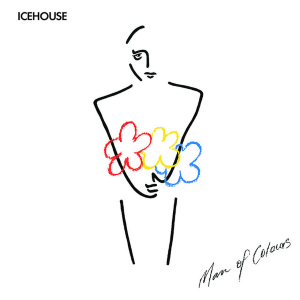Related Research Articles

Paul Ehrlich was a Nobel Prize-winning German physician and scientist who worked in the fields of hematology, immunology, and antimicrobial chemotherapy. Among his foremost achievements were finding a cure for syphilis in 1909 and inventing the precursor technique to Gram staining bacteria. The methods he developed for staining tissue made it possible to distinguish between different types of blood cells, which led to the ability to diagnose numerous blood diseases.
Methylthioninium chloride, commonly called methylene blue, is a salt used as a dye and as a medication. Methylene blue is a thiazine dye. It works by converting the ferric iron in hemoglobin to ferrous iron. As a medication, it is mainly used to treat methemoglobinemia. Specifically, it is used to treat methemoglobin levels that are greater than 30% or in which there are symptoms despite oxygen therapy. It has previously been used for cyanide poisoning and urinary tract infections, but this use is no longer recommended.

A birthmark is a congenital, benign irregularity on the skin which is present at birth or appears shortly after birth—usually in the first month. They can occur anywhere on the skin. Birthmarks are caused by overgrowth of blood vessels, melanocytes, smooth muscle, fat, fibroblasts, or keratinocytes.

Staining is a technique used to enhance contrast in samples, generally at the microscopic level. Stains and dyes are frequently used in histology and in the medical fields of histopathology, hematology, and cytopathology that focus on the study and diagnoses of disease at a microscopic level. Stains may be used to define biological tissues, cell populations, or organelles within individual cells.

Histopathology refers to the microscopic examination of tissue in order to study the manifestations of disease. Specifically, in clinical medicine, histopathology refers to the examination of a biopsy or surgical specimen by a pathologist, after the specimen has been processed and histological sections have been placed onto glass slides. In contrast, cytopathology examines free cells or tissue micro-fragments.

Crystal violet or gentian violet, also known as methyl violet 10B or hexamethyl pararosaniline chloride, is a triarylmethane dye used as a histological stain and in Gram's method of classifying bacteria. Crystal violet has antibacterial, antifungal, and anthelmintic (vermicide) properties and was formerly important as a topical antiseptic. The medical use of the dye has been largely superseded by more modern drugs, although it is still listed by the World Health Organization.

Periodic acid–Schiff (PAS) is a staining method used to detect polysaccharides such as glycogen, and mucosubstances such as glycoproteins, glycolipids and mucins in tissues. The reaction of periodic acid oxidizes the vicinal diols in these sugars, usually breaking up the bond between two adjacent carbons not involved in the glycosidic linkage or ring closure in the ring of the monosaccharide units that are parts of the long polysaccharides, and creating a pair of aldehydes at the two free tips of each broken monosaccharide ring. The oxidation condition has to be sufficiently regulated so as to not oxidize the aldehydes further. These aldehydes then react with the Schiff reagent to give a purple-magenta color. A suitable basic stain is often used as a counterstain.
A medical specialty is a branch of medical practice that is focused on a defined group of patients, diseases, skills, or philosophy. Examples include children (paediatrics), cancer (oncology), laboratory medicine (pathology), or primary care. After completing medical school, physicians or surgeons usually further their medical education in a specific specialty of medicine by completing a multiple-year residency to become a specialist.

Hematoxylin and eosin stain is one of the principal tissue stains used in histology. It is the most widely used stain in medical diagnosis and is often the gold standard. For example, when a pathologist looks at a biopsy of a suspected cancer, the histological section is likely to be stained with H&E.
The Royal Australasian College of Physicians (RACP) is a not-for-profit professional organisation responsible for training and educating physicians and paediatricians across Australia and New Zealand.

Man of Colours is the fifth studio album by Australian rock/synthpop band Icehouse, released locally on 21 September 1987 on Regular Records / Chrysalis Records.
The Potbelleez are a three-member Irish-Australian electro-house and dance music group, which formed in 2003 as a duo by DJs Dave Goode and Jonny Sonic. In 2005 they were joined by rapper Blue MC on vocals and in 2006 by iKid on vocals. In October 2007, the group issued their breakthrough single, "Don't Hold Back", which peaked at No. 5 on the ARIA Singles Chart and, in 2011, it was certified 3× Platinum by ARIA. On 22 November 2008 their debut self-titled album was released, which reached No. 17 on the ARIA Albums Chart. On 27 May 2011 they issued a second studio album, Destination Now, which peaked at the same position. It spawned Gold and Multi Platinum-accredited singles "Hello" (2010) and "From the Music" (2011).

The Medical Journal of Australia is a peer-reviewed medical journal published 22 times a year. It is the official journal of the Australian Medical Association, published by Wiley on behalf of the Australasian Medical Publishing Company.
The Australasia County Board of the Gaelic Athletic Association (GAA), or Australasian GAA, or Gaelic Football & Hurling Association of Australasia is one of the county boards of the GAA outside Ireland, and is responsible for Gaelic games all across Australasia. It is also responsible for Australasian inter-state matches, primarily conducted in an annual weeklong tournament. The association is made up of the Australian state associations of New South Wales, Queensland, South Australia, Tasmania, Victoria and Western Australia, and the New Zealand associations of Wellington and Canterbury. A third New Zealand association - Auckland - is presently on hiatus from its membership of Australasia.

Pappenheimer bodies are abnormal basophilic granules of iron found inside red blood cells on routine blood stain. They are a type of inclusion body composed of ferritin aggregates, or mitochondria or phagosomes containing aggregated ferritin. They appear as dense, blue-purple granules within the red blood cell and there are usually only one or two, located in the cell periphery. They stain on a Romanowsky stain because clumps of ribosomes are co‐precipitated with the iron‐containing organelles.

"Blue Sky Mine" is a song by Australian rock band Midnight Oil, released in February 1990 as the first single from their seventh studio album, Blue Sky Mining (1990). The song was inspired by the experiences of workers at the Wittenoom asbestos mines who contracted various asbestos-related diseases. The "blue" refers to blue asbestos, and the "sugar refining company" refers to the Colonial Sugar Refining Company Ltd, the owner of the mines.

Alcian blue is any member of a family of polyvalent basic dyes, of which the Alcian blue 8G has been historically the most common and the most reliable member. It is used to stain acidic polysaccharides such as glycosaminoglycans in cartilages and other body structures, some types of mucopolysaccharides, sialylated glycocalyx of cells etc. For many of these targets it is one of the most widely used cationic dyes for both light and electron microscopy. Use of alcian blue has historically been a popular staining method in histology especially for light microscopy in paraffin embedded sections and in semithin resin sections. The tissue parts that specifically stain by this dye become blue to bluish-green after staining and are called "Alcianophilic". Alcian blue staining can be combined with H&E staining, PAS staining and van Gieson staining methods. Alcian blue can be used to quantitate acidic glycans both in microspectrophotometric quantitation in solution or for staining glycoproteins in polyacrylamide gels or on western blots. Biochemists had used it to assay acid polysaccharides in urine since the 1960s for diagnosis of diseases like mucopolysaccharidosis but from 1970's, partly due to lack of availability of Alcian and partly due to length and tediousness of the procedure, alternative methods had to be developed e.g. Dimethyl methylene blue method.
A phlebologist is a medical specialist in the diagnosis and treatment of disorders of venous origin. The specialty of phlebology has developed to enable physicians sharing an interest in venous disease and health to share knowledge and experience despite being trained in a variety of backgrounds such as dermatology, vascular surgery, haematology, interventional radiology or general medicine. Diagnostic techniques used include the patient's history and physical examination, venous imaging techniques in particular vascular ultrasound and laboratory evaluation related to venous thromboembolism. The American Medical Association and the American Osteopathic Association has added phlebology to their list of self-designated practice specialties.

Tooth discoloration is abnormal tooth color, hue or translucency. External discoloration is accumulation of stains on the tooth surface. Internal discoloration is due to absorption of pigment particles into tooth structure. Sometimes there are several different co-existent factors responsible for discoloration.
Jaswant Singh–Bhattacharji stain, commonly referred to as JSB stain, is a rapid staining method for detection of malaria. It is useful for the diagnosis of malaria in thick smear samples of blood. The JSB stain is commonly used throughout India, but rarely used in other countries.
References
- ↑ Australasian Medical Gazette: The Journal of the Australasian Branches of the British Medical Association. L. Bruck. 1908. p. 457.
- ↑ Association, American Veterinary Medical (1905). Proceedings. p. 352. Retrieved 11 November 2017.